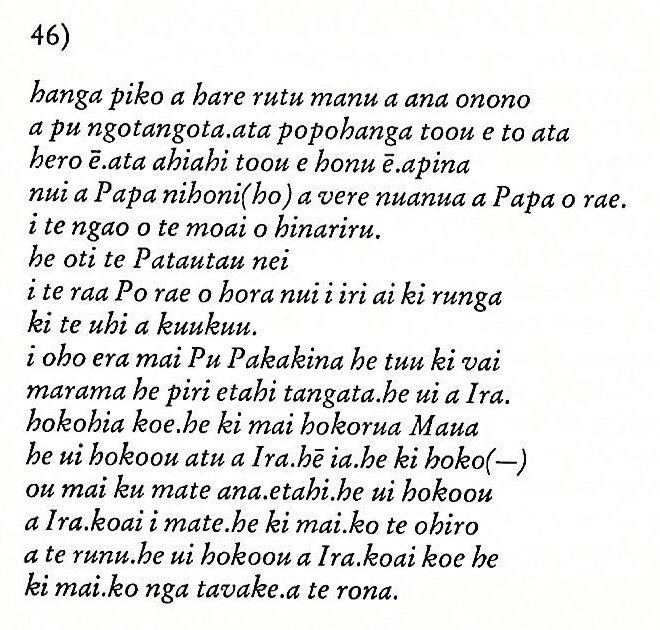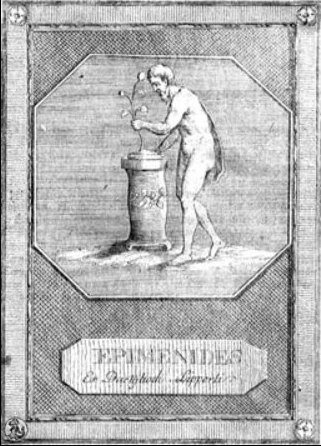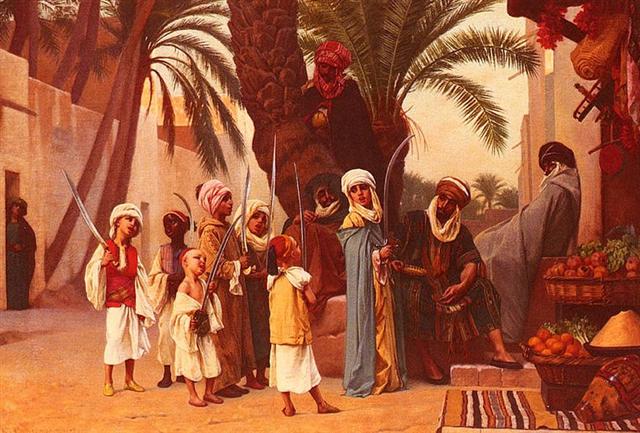A most important clue is given in the statement:
...
On the first
day of the month of September ('Hora Nui') they went up to the
yam plantation of Kuukuu - i te raa Po rae o hora nui i iri
ai ki runga ki the uhi a kuukuu (E:46).

For this yam plantation had been established
in "June 10 -
i te angahuru o te raa o te maro:
...
They made camp and constructed a house [te hare]. Kuukuu
got up, worked the ground, and heaped up the earth for the yam
roots [he puke i te uhi] - he noho o(i)ra he hakatuu i
te hare.he ea a kuukuu he keukeu he puke i te uhi. (E:18)

So the Explorers could have returned there after 244 (Hora Nui 1) - 161 (He Maro
10) = 83 days.
And we know (E:31) that they had gone to Pu Pakakina in Hora
Iti 29 - i te rua te angahuru maiva. o te raa o hora iti
i oho ai ki pu pakakina.a Ira - which therefore ought to have been 3
days before Hora Nui 1:
| te hokohuki |
te moko |
vero
hia |
tagata honui |
e
ha mata |
|
Ha. 1. Four. 2. To
breathe. Hakaha'a, to
flay, to skin. Vanaga. 1. Four. P Mgv., Mq., Ta.: ha, id.
2. To yawn, to gape. 3. To heat. 4. Hakaha,
to skin, to flay; unahi hakaha, to scale
fish. Mgv.: akaha, to take to pieces, to
take off the bark or skin, to strip the leaves
off sugarcane. 5. Mgv: ha, sacred,
prohibited. Mq.: a, a sacred spot. Sa.:
sa, id. Churchill. |
 |
 |
 |
 |
 |
|
Cb8-4 |
Cb8-5 (172 + 4) |
Cb8-6 (177 = 6 * 29½) |
Cb8-7 (392 + 178 = 570) |
Cb8-8 (1½ * 314 + 100) |
|
CLOSE TO THE
FULL MOON: |
|
γ Hydrae (201.0), ι Centauri (201.4)
*160.0 = *201.4 - *41.4 |
Al Simāk-12 (Lofty) /
Chitra-14 (Bright One) /
Horn-1 (Crocodile) /
Sa-Sha-Shirū-20
(Virgin's Girdle) /
ANA-ROTO-3 (Middle pillar)
MIZAR = ζ Ursae Majoris
(202.4),
SPICA
= α Virginis,
ALCOR
= 80 Ursae Majoris
(202.7)
SADALMELIK (α Aquarii)
*161.0 = *202.4 - *41.4 |
71 VIRGINIS
(203.6) |
no
star listed (204) |
HEZE
= ζ Virginis
(205.0),
Southern Pinwheel Galaxy = M83 Hydrae
(205.7) |
|
... Proclus
informs us that the fox star nibbles
continuously at the thong of the yoke which
holds together heaven and earth; German folklore
adds that when the fox succeeds, the world will
come to its end. This fox star is no other than
Alcor, the small star g near zeta Ursae
Majoris (in India Arundati, the common
wife of the Seven Rishis, alpha-eta Ursae
...
 |
|
Oct
8 (240 + 41) |
9 |
10 |
11 (364 - 80) |
12 (285) |
|
'Sept 11 (354 - 100) |
12 |
13
(256 = 4 * 64) |
14 |
15 |
|
"Aug
28 (240) |
HORA ITI 29 |
30
(242 = 2 * 11 * 11) |
31 |
HORA NUI 1 |
|
AHU
AKAPU |
PU PAKAKINA A IRA |
|
Paka. 1. Dry; to become dry (of
things); pakapaka, to dry out. Te paka
is also the name of the moss-covered areas,
between the small lakes of volcano Rano Kau,
through which one can pass without getting
one's feet wet. 2. To go, to depart;
he-paka-mai, to come; he-oho, he-paka,
they go away. 3. To become calm (of the
sea): ku-paka-á te tai. Pakahera,
skull, shell, cranium; pakahera puoko tagata,
human skull; pakahera pikea, shell of
crab or crayfish. Gutu pakapaka, scabbed
lips. Hau paka, fibres of the hauhau
tree, which were first soaked in water, then
dried to produce a strong thread. Moa gao
verapaka, chicken with bald neck. Ariki
Paka, certain collateral descendents of
Hotu Matu'a, who exercised religious
functions. Vanaga. 1. Crust, scab, scurf;
paka rerere, cancer; pakapaka, crust,
scabby. 2. Calm, still. 3. Intensive; vera
paka, scorching hot; marego paka,
bald; nunu paka, thin. 4. To arrive, to
come. 5. To be eager. 6. To absorb. 7. Shin T.
Pakahera, calabash, shell, jug.
Pakahia, to clot, curdle, coagulate.
Pakapaka, dry, arid, scorching hot, cooked
too much, a desert, to fade away, to roast, a
cake, active; toto pakapaka, coagulated
blood; hakapakapaka, to dry, to broil, to
toast. Pakahera pikea, shell of crab or
crayfish. Churchill.
Kinana,
s. Haw., a hen that has hatched chickens.
Sam., tina,
a mother.
Tong., tina-manu, a sow that had litter.
Tah., ti'a,
the lower part of the stomach, below the navel.
Fiji., tina,
mother; tina-tina, mother of inferior
animals. N.
Zeal., tinana, the buttocks, trunk, body.
This word, with
somewhat varying but not far separate meanings,
I am inclined to consider as related to the
Goth., kwens,
kwino, a woman; kwina-kunds and
kwineins, female; and possibly kwithus,
the womb, the stomach, if that is syncope of an
original kwinthus. Greek,
γυνη, woman
... |
|
CLOSE TO THE
SUN: |
|
April 8
no
star listed (18) |
9
ADHIL
(Garment's Train) = ξ Andromedae
(19.3),
θ
Ceti (19.7) |
10
(100)
KSORA (Knee) = δ Cassiopeiae
(20.1),
ω
Andromedae (20.6),
γ
Phoenicis (20.8) |
11 (364 - 263)
δ
Phoenicis (21.5) |
12
υ Andromedae (22.9) |
|
'March 12 |
13 |
14
(73) |
15 |
16 |
|
"Febr 26 |
27 |
28
(59) |
29 |
"March 1 |
 |
As we can see in the G text Hora Iti 29 corresponded to
the place where the Sun reached Spica and Hora Nui 1 the
place where the Sun reached Heze - i.e. when these places were
at the Full Moon they would have indicated the corresponding
season on Easter Island (viz. early October).
|
CLOSE TO THE SUN: |
|
JULY 31 |
AUG 1 |
2 (214) |
(*135 =
500 - 365) |
4 (*136) |
5 |
6 |
 |
 |
 |
 |
 |
 |
 |
|
Ga5-22 |
Ga5-23 |
Ga5-24 |
Ga5-25 (135) |
Ga5-26 |
Ga5-27
(→ 364) |
Ga5-28 |
|
δ
Muscae (196.5),
VINDEMIATRIX (Grape Gatherer) =
ε
Virginis
(196.8) |
13h (197.8)
ξ¹ Centauri (197.1), ξ² Centauri (197.9) |
APAMI-ATSA (Child of Waters) = θ Virginis,
ψ
Hydrae (198.5),
DIADEM =
α
Com. Ber.
(198.9) |
AL DAFĪRAH (Tuft) = β Com. Ber.
(199.4)
*158.0 = *199.4 - *41.4 |
σ
Virginis (200.4)
*159.0 = *200.4 - *41.4 |
γ Hydrae (201.0), ι Centauri (201.4)
*160.0 = *201.4 - *41.4 |
Al Simāk-12 (Lofty) /
Chitra-14 (Bright One) /
Horn-1 (Crocodile) /
Sa-Sha-Shirū-20
(Virgin's Girdle) /
ANA-ROTO-3 (Middle pillar)
MIZAR = ζ Ursae Majoris
(202.4),
SPICA
= α Virginis,
ALCOR
= 80 Ursae Majoris
(202.7)
SADALMELIK (α Aquarii)
*161.0 = *202.4 - *41.4 |
|
Oct 3 |
4 (277) |
5 |
6 |
7 (*200) |
8 |
9 (282) |
|
°Sept
29 |
30 |
°Oct 1 |
2 (275) |
3 (*196) |
4 |
5 |
|
'Sept 6 |
7 (250) |
8 |
9 |
10 |
11 |
12
(*175) |
|
"Aug
23 |
24 (236
= 8 * 29½) |
25 |
26 |
27 |
28 |
Hora Iti
29 |
|
CLOSE TO THE SUN: |
|
AUG
7 (219) |
8
(*140) |
 |
 |
|
Ga5-29 |
Ga5-30 (140) |
|
71 VIRGINIS
(203.6) |
no
star listed (204) |
|

...
Mons Maenalus, at the feet of Boötes, was
formed by Hevelius, and published in his
Firmamentum Sobiescianum; this title
coinciding with those of neighboring stellar
groups bearing Arcadian names. It is sometimes,
although incorrectly, given as Mons Menelaus,
- perhaps, as Smyth suggested, after the
Alexandrian astronomer referred to by Ptolemy
and Plutarch. The Germans know it as the Berg
Menalus; and the Italians as Menalo.
Landseer has a striking representation of the
Husbandsman, as he styles Boötes, with sickle
and staff, standing on this constellation
figure. A possible explanation of its origin may
be found in what Hewitt writes in his Essays
on the Ruling Races of Prehistoric Times:
The
Sun-god thence climbed up the mother-mountain of
the Kushika race as the constellation Hercules,
who is depicted in the old traditional pictorial
astronomy as climbing painfully up the hill to
reach the constellation of the Tortoise, now
called Lyra, and thus attain the polar star
Vega, which was the polar star from 10000 to
8000 B.C.
May
not this modern companion constellation, Mons
Maenalus, be from a recollection of this early
Hindu conception of our Hercules transferred to
the adjacent Bootes? |
|
CLOSE TO THE
SUN: |
|
AUG
9 |
10
(222) |
11 |
12 |
13
(*145) |
 |
 |
 |
 |
 |
|
Ga6-1 |
Ga6-2 |
Ga6-3 |
Ga6-4 (144 = 12 *
12) |
Ga6-5 (290 / 2) |
|
HEZE
= ζ Virginis
(205.0),
Southern Pinwheel Galaxy = M83 Hydrae
(205.7) |
ε
Centauri (206.3), κ Oct.
(206.4)
*165.0
= *206.4 - *41.4 |
no
star listed (207) |
τ
Bootis (208.2),
BENETNASH
(Leader of the Daughters of the Bier) =
η
Ursae Majoris
(208.5),
ν
Centauri (208.7),
μ
Centauri,
υ
Bootis (208.8) |
no
star listed (209) |
 |
|
Oct
12 (285) |
13 |
14 |
15
(*208) |
16 |
|
°Oct 8 |
9 |
10 |
11 (*204) |
12
(285) |
|
'Sept 15 |
16 |
17
(260) |
18 |
19
(*182) |
|
Hora
Nui 1 |
"Sept
2 |
3 |
4 |
5
(*168) |
|
CLOSE TO THE
FULL MOON: |
|
FEBR
8 (*324) |
9
(40) |
10 |
11 |
12
(365 + 43 = 408) |
|
... On
February 9 the Chorti Ah K'in,
'diviners', begin the agricultural year. Both
the 260-day cycle and the solar year are used in
setting dates for religious and agricultural
ceremonies, especially when those rituals fall
at the same time in both calendars. The ceremony
begins when the diviners go to a sacred spring
where they choose five stones with the proper
shape and color. These stones will mark the five
positions of the sacred cosmogram created by the
ritual. When the stones are brought back to the
ceremonial house, two diviners start the ritual
by placing the stones on a table in a careful
pattern that reproduces the schematic of the
universe. At the same time, helpers under the
table replace last year's diagram with the new
one. They believe that by placing the cosmic
diagram under the base of God at the center of
the world they demonstrate that God dominates
the universe. The priests place the stones in a
very particular order. First the stone that
corresponds to the sun in the eastern, sunrise
position of summer solstice is set down; then
the stone corresponding to the western, sunset
position of the same solstice. This is followed
by stones representing the western, sunset
position of the winter solstice, then its
eastern, sunrise position. Together these four
stones form a square. They sit at the four
corners of the square just as we saw in the
Creation story from the Classic period and in
the Popol Vuh. Finally, the center stone is
placed to form the ancient five-point sign
modern researchers called the quincunx ...
 |
|
ACHERNAR
(End of the River) =
α
Eridani
(23.3),
χ
Andromedae (23.6),
τ
Andromedae (23.9) |
ALSEIPH
(Scimitar) =
φ
Persei
(24.5),
τ
Ceti (24.7) |
no star listed (25) |
ANA-NIA-10 (Pillar-to-fish by)
χ
Ceti (26.1),
POLARIS
=
α
Ursae Minoris, BATEN KAITOS (Belly of the Fish)
=
ζ
Ceti
(26.6),
METALLAH =
α
Trianguli
(26.9) |
Al Sharatain-1 /
Ashvini-1 (Horse's Head) /
Bond-16 (Dog) /
Mahrū-sha-rishu-ku-1 (Front of the Head of Ku)
SEGIN = ε Cassiopeia, MESARTHIM = γ Arietis,
ψ
Phoenicis (27.2),
SHERATAN
(Pair of Signs) =
β
Arietis,
φ
Phoenicis (27.4)
*351.0 = *27.4 - *41.4 |
|
April 13 |
14 →
41.4 |
15 |
16
(471) |
17
(107) |
|
°April 9 |
10
(100) |
11 |
12
(*22) |
13 |
|
'March 17 |
18 |
19
(78) |
20
(*364) |
0h |
|
"March 3 |
Tarahao 4 (2 * 214) |
5
(64) |
6
(*350) |
7 |
|
Tara,
1. Thorn: tara miro.
2. Spur: tara moa. 3. Corner; te tara
o te hare, corner of house; tara o te
ahu, corner of ahu. Vanaga. (1.
Dollar; moni tara, id.) 2. Thorn, spike,
horn; taratara, prickly, rough, full of
rocks. P Pau.: taratara, a ray, a beam;
tare, a spine, a thorn. Mgv.: tara,
spine, thorn, horn, crest, fishbone. Mq.: taá,
spine, needle, thorn, sharp point, dart,
harpoon; taa, the corner of a house,
angle. Ta.: tara, spine, horn, spur, the
corner of a house, angle. Sa.: tala, the
round end of a house. Ma.: tara, the side
wall of a house. 3. To announce, to proclaim, to
promulgate, to call, to slander; tatara,
to make a genealogy. P Pau.: fakatara, to
enjoin. Mq.: taá, to cry, to call. 4.
Mgv.: tara, a species of banana. Mq.:
taa, a plant, a bird. Ma.: tara, a
bird. 5. Ta.: tara, enchantment. Ma.:
tara, an incantation. 6. Ta.: tara,
to untie. Sa.: tala, id. Ha.: kala,
id. Churchill
Hao. Ta.: to encircle. To.: hao, id. Ma.:
hao, to inclose, to draw around. Churchill. |

|















